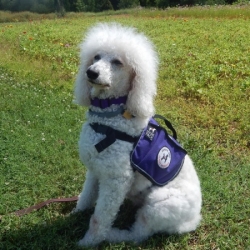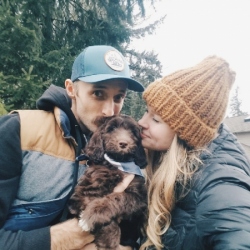


Canine parvovirus is an acute, highly contagious disease of dogs that was first described in the early 1970s. The virus has a tendency to attack rapidly reproducing cells, such as those lining the gastrointestinal tract.
For best results, patients should be hospitalized and placed on IV fluids, massive doses of antibiotics, anti-vomiting drugs, intravenous feeding and serum transfusions in some cases. Intensive monitoring and high quality nursing care is essential to save these dogs. While the virus itself cannot be killed, most dogs that can be kept alive for 4-10 days post infection will recover completely. Dogs exposed to parvo-infected patients should be given a parvo vaccine containing killed virus only as soon as practical.
The virus is shed in large amounts in the stools of acutely infected dogs for up to several weeks following infection. The disease is transmitted by oral contact with infected feces. Parvo can be carried on the dog’s hair and feet, as well as on contaminated crates, shoes, and other objects. When the dog licks the fecal material off hair, feet, or anything that came in contact with infected feces, he acquires the disease.
Parvo affects dogs of all ages, but most cases occur in puppies 6 to 20 weeks of age. Doberman Pinschers and Rottweilers appear to acquire the infection more readily and experience more severe symptoms. The reason for lower resistance in these breeds is unknown.
Following an incubation period that averages four to five days, the acute illness begins with depression, vomiting, and diarrhea. Some dog have no fever, while others have high fever (up to 106°F, 41.1°C). Pups with severe abdominal pain exhibit a tucked-up abdomen. Diarrhea is profuse and contains mucus and/or blood. Dehydration develops rapidly.
Heart muscle involvement in neonatal puppies used to be common, but is now quite rare. This is because routine vaccination of brood bitches two to four weeks before breeding boosts maternal antibody levels and provides better protection for puppies.
Suspect parvo in all pups with the abrupt onset of vomiting and diarrhea. The most efficient way to diagnose parvo is to identify either the virus or virus antigens in stools. An in-office blood serum test (ELISA) is available for rapid veterinary diagnosis. False negatives do occur. Virus isolation techniques are more precise, but require an outside laboratory.
Treatment: Dogs with this disease require intensive veterinary management. In all but the most mild cases, hospitalization is essential to correct dehydration and electrolyte imbalances. Intravenous fluids and medications to control vomiting and diarrhea are often required. More severe cases may require blood plasma transfusions and other intensive care.
Puppies and dogs should not eat or drink until the vomiting has stopped. but require fluid support during that time. This can take three to five days. Antibiotics are prescribed to prevent septicemia and other bacterial complications, which are the usual cause of death.
The outcome depends upon the virulence of the specific strain of parvovirus, the age and immune status of the dog, and how quickly the treatment is started. Most pups who are under good veterinary care recover without complications.
Vaccinations, starting by 8 weeks of age, will prevent most (but not all) cases of parvovirus infection. During the first weeks of life, puppies are protected by high levels of maternal antibodies. As these levels decline, there is a period lasting from two to four weeks during which puppies are susceptible to infection because vaccinations have not yet fully taken effect. This susceptible period varies from pup to pup, which is why pups anywhere between 6 and 20 weeks age can be especially susceptible to parvo. Nearly all apparent vaccination failures are due to exposure during this susceptible period.
Newer high titer-low passage vaccines are narrowing the window of susceptibility. These modified live virus vaccines contain a higher number of virus particles (high titer), which are less attenuated (low passage; a low passage vaccine contains virus particles that have been less attenuated, or weakened, than those in the average vaccine). That means high titer-low passage vaccines can generally elicit an immune system response in young animals who have a maternal antibody level that would normally prevent them from responding.
Nevertheless, it is still important to isolate young puppies as much as possible from other dogs and from potential sources of infection until they complete the parvo vaccination series at 16 weeks of age.
Currently, recommendations are for a booster a year from the initial vaccine series and then revaccination every three years.
However please read my post on Vaccinoisis before following this vaccination regime.